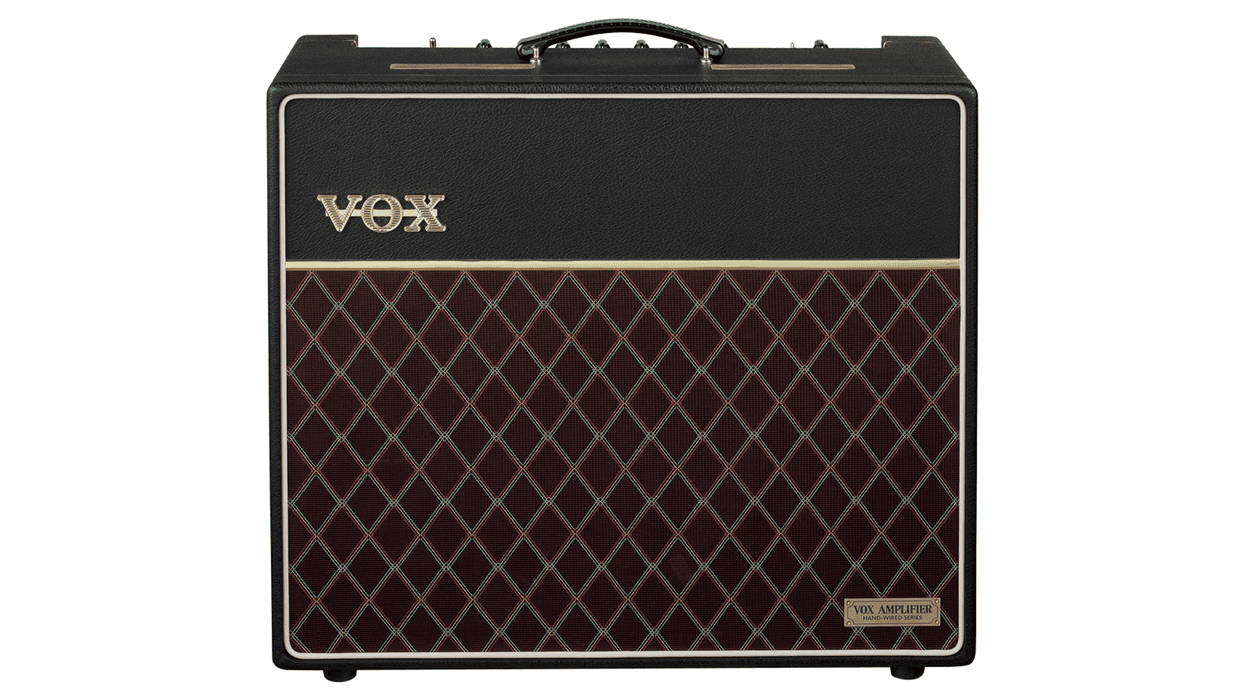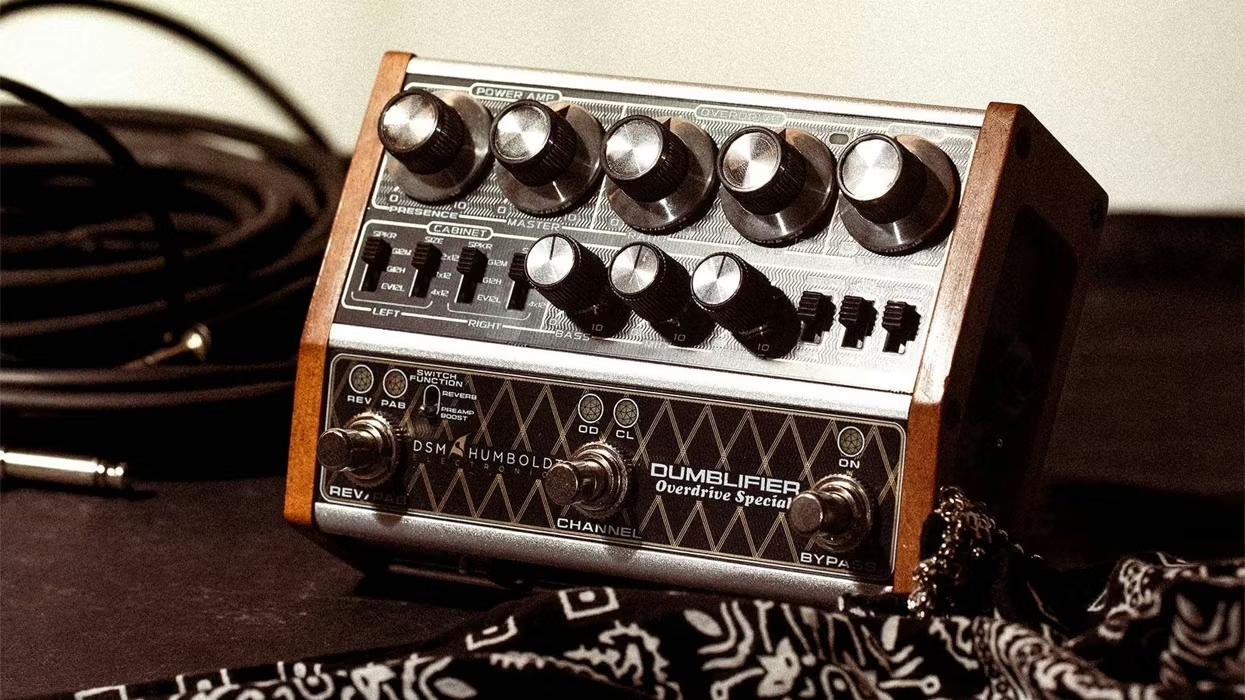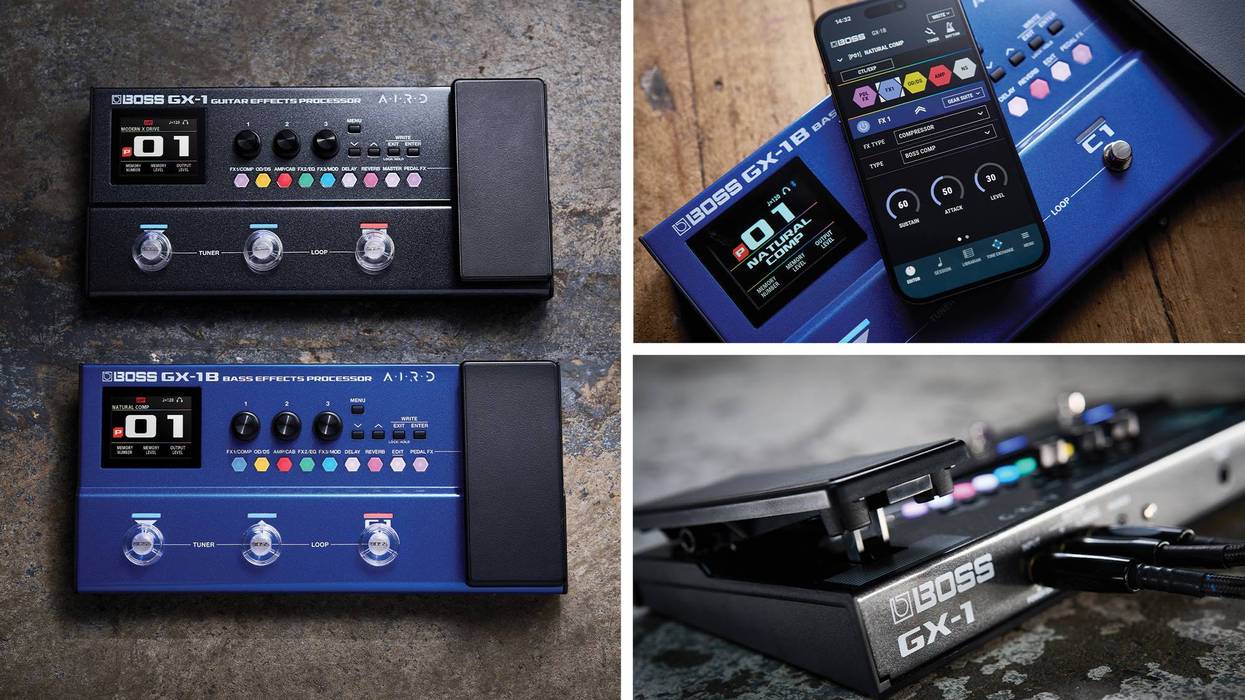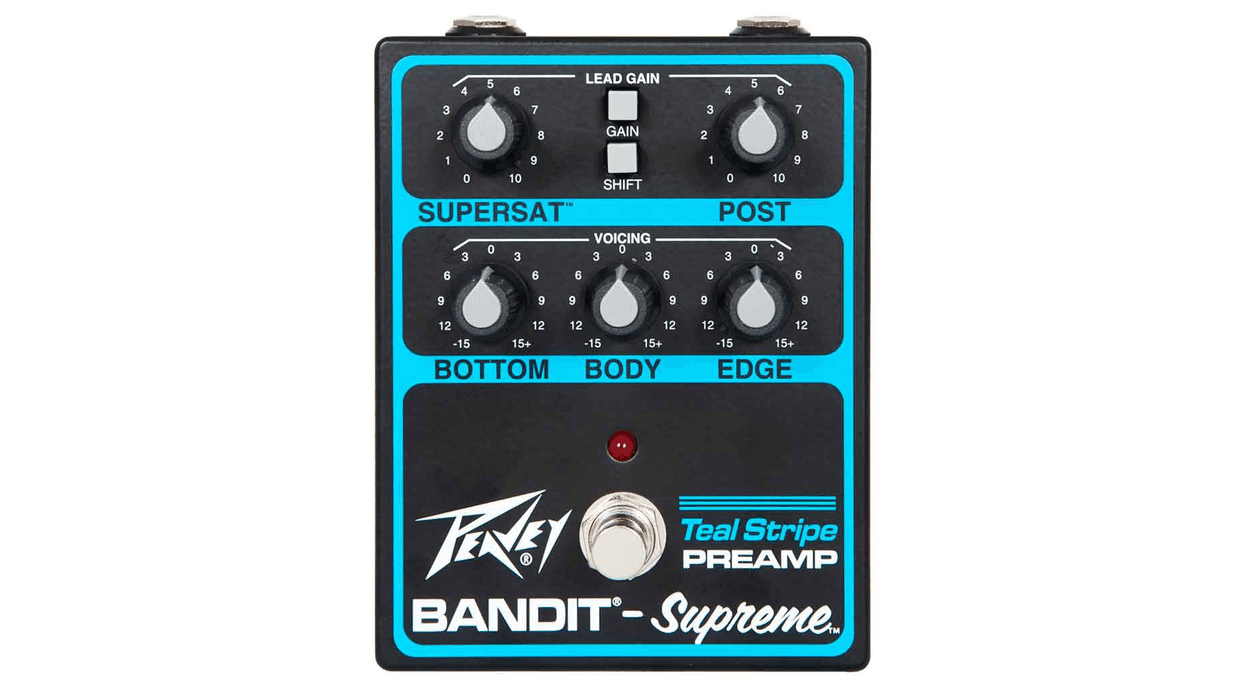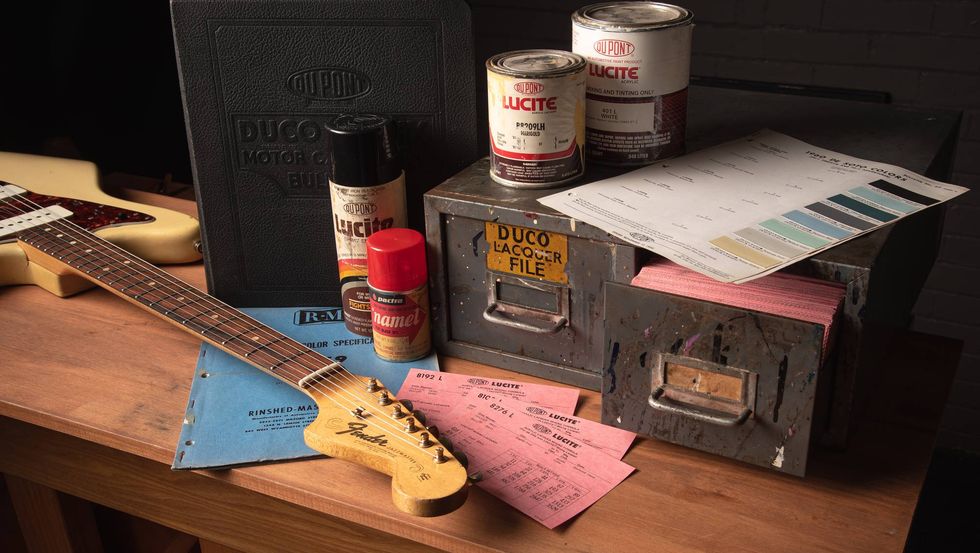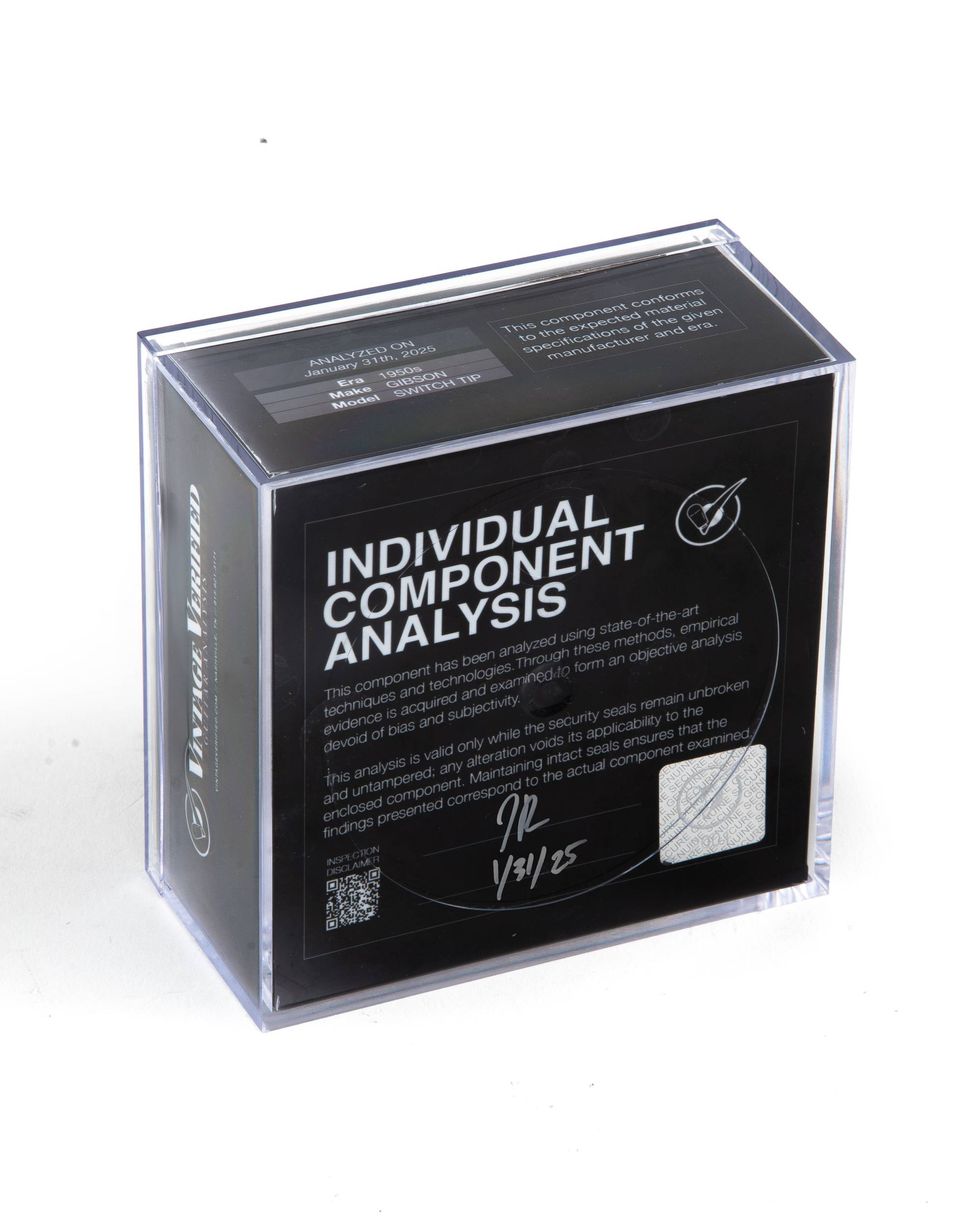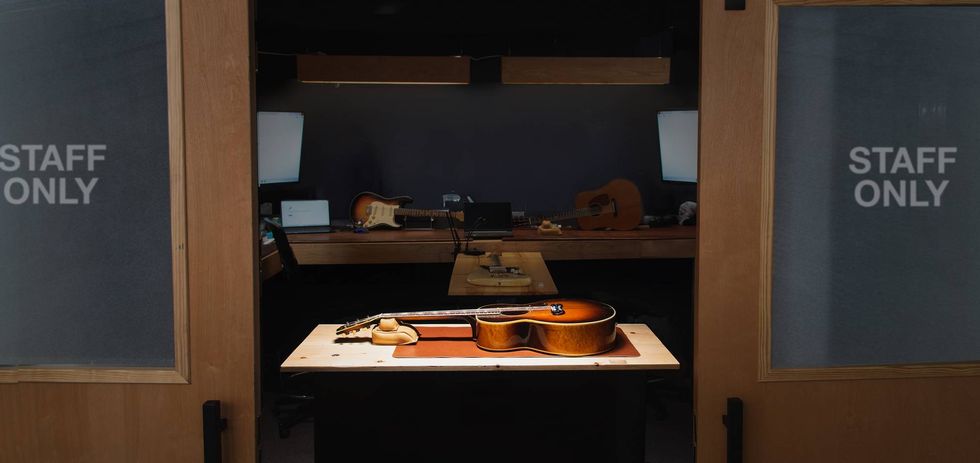Electric guitar culture has rarely strayed far from its mid-century birthing grounds. Manufacturers still cling to designs that were forged between the late-’50s and early-’60s. But that doesn’t mean there isn’t room to explore those themes in imaginative ways, and Eastwood Guitars—which based it’s early business on homages to oddball mid-century designs—is exploring its own retro-futurist tangents with guitars like the Model One, designed by Nashville-based luthier and tech Jeff Senn.
George Jetsonsmaster
Though you can see bits and pieces of iconic guitar designs in the Model One—most notably, Fender offset cues—the Senn feels original and unified. You never get the sensation that you’re holding a cherry-picked mish-mash of classic parts. Even so, the vintage charm is strong. And while the Model One is clearly a product of lust for the Space Age (It actually looks like it’s flying when hanging from a strap!), there are certain aspects of the design, like the headstock, that look a little more streamlined and 21st century.
With its basswood body, our demo Model One weighed less than eight pounds and balanced nicely on a strap. (The streamlined headstock is almost certainly an asset here.) The fit and finish of the guitar is excellent where it counts most—the metallic red that covers its body and neck is free of blemishes. And the fretwork is smooth and consistent up the neck.
of garage-rock snarl.
The Eastwood/Senn has a maple neck topped with a rosewood fretboard that’s built around a comfortable D shape that’s substantial without being chunky. In fact, it feels a little like a ’50s-style Stratocaster with a much flatter fretboard radius. While the Model One is built around a Gibson-style 24 3/4” scale length, the Jazzmaster-style vibrato provides a bit of extra string length and tension, which, to my ears, gives the Model One a little more top-end resonance. These specs add up to a playable and relatively pliable axe, but with a string tension that made it a killer rhythm machine.
The Senn/Eastwood’s control array is functional: a volume knob, a tone knob, and a 3-way pickup switch in the shape of a white flipper that looks nicked from an old tube radio. While the pickup selector knob looks cool, it didn’t always feel as immediate, accessible, or robust as it could be. The vibrato arm also could be more responsive. It had a loose feel that made deep bends seem a little imprecise. On the upside, the roller bridge is a big improvement over traditional Jazzmaster-style bridges and does a fine job of keeping the guitar in tune when you use the vibrato heavily.
Ratings
Pros:
Killer looks and vibey vintage sounds. Available left-handed.
Cons:
Some hardware feels cheap for this price range.
Tones:
Playability:
Build/Design:
Value:
Street:
$679
Eastwood Jeff Senn Model One
eastwoodguitars.com
Bell Chimes and Beefy Tones
Model One tones feel like the product of well-considered design moves. Clean tones are articulate and biting with plenty of chime—thanks in no small part to the duo of deceptive single-coil pickups lurking beneath the Model One’s chrome, humbucker-style covers. The pickups are the same single-coils Eastwood uses in its Airline guitars, which are inspired by the Valco models found in many late-’50s Supros, Nationals, and Airlines. I really liked the tones of the Airline Vintage Voiced Single Coils. But customers that dig the Model One aesthetic yet prefer the muscle of humbuckers can take solace in the fact that most PAF-style pickups fit without any additional routing.
As the Jazzmaster-style vibrato suggests, endless sustain is not a major part of the Model One equation. The attack is killer and the overtones are colorful, but you’re a long way from Les Paul-style hang-time. That said, through an Orange Rocker 30 1x12 combo, the Model One produced zingy high-mid jangle tones and lots of garage-rock snarl. The Airline VVSC pickups remained articulate when filtered through beefy Muff-style fuzzes and the Orange’s midrange-y EQ profile. And though it has great capacity for detail, the Model One just about begs you to bash away at simple, brassy chords. Using the bridge pickup and the Rocker 30 at full volume, the Model One dished muscular, MC5-riff tones and laser-sharp lead sounds that never seemed harsh.
Through a clean, Fender-style amp, the Model One happily delivered British Invasion chime and sparkle with plenty of plunky, twangy top end on tap, and I have no doubt it would excel with a set of flatwound strings and a touch of compression for even-more-vintage sounds. The neck pickup is smooth and flute-like with plenty of presence. It also flattens out gracefully for jazzier passages with a little tone attenuation.
The Verdict
If you’re looking for an original design that remains fundamentally rooted in a vintage aesthetic, the Senn/Eastwood Model One is a killer, affordable option. And for less than $700 (including a gig bag), you get a balanced, well-built, and thoughtfully designed guitar brimming with detailed vintage tones that can run from jangly to raunchy.








